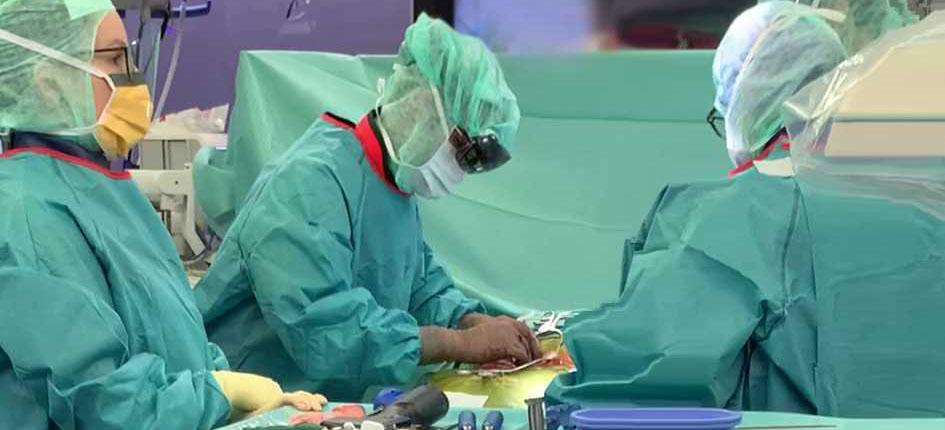A surgical team from the Zurich-based Balgrist University Hospital has for the first time used Augmented Reality (AR) in an operating theatre. At the start of December, the first ever holographically navigated spinal operation with direct navigation was performed at Balgrist University Hospital. “We are now entering a new era of surgery”, according to surgeon and Medical Director of the Balgrist University Hospital, Mazda Farshad, in a press release issued by the Swiss Federal Institute of Technology in Zurich (ETH). The successful surgical intervention is being described as an “important medical milestone” by ETH Zurich.
CT imaging is used to generate 3D representations of the affected anatomy before being directly projected into the surgical field during the operation. The surgeon is able to see this 3D anatomy with the help of AR glasses (known as Hololens 2). “AR enhances the surgeon's senses and improves their perception”, comments the spinal specialist Farshad in the press release.
The operation marked the start of a randomized controlled clinical study that aims to verify the benefits of this surgical innovation. This world-first study “marks the peak of the University Medicine Zurich flagship project SURGENT”, the press release states further. The study is being led by Mazda Farshad and Mirko Meboldt, who is an ETH Professor for product development. “The collaboration between visionary medical professionals like Mazda Farshad with the University of Zurich and the ETH is a unique opportunity and forms the basis for this success”, Meboldt states in the press release.
Orthopedics is said to be particularly well-suited for the application of AR due to the fact that bones are more easily compared with previously created CT images. This is according to Philipp Fürnstahl, Head of ROCS (Research in Orthopedic Computer Science) at Balgrist University Hospital, who was quoted in a press release issued by the hospital. With his team, Fürnstahl helped to design the software. According to this press release, an interdisciplinary team comprising more than 20 experts from Incremed, a spin-off from Balgrist University Hospital in Zurich, was also involved. The start-up, which was co-founded by Mazda Farshad in 2018, uses Augmented Reality and Machine Learning “to revolutionize medical diagnosis and interventions in orthopedics”.







